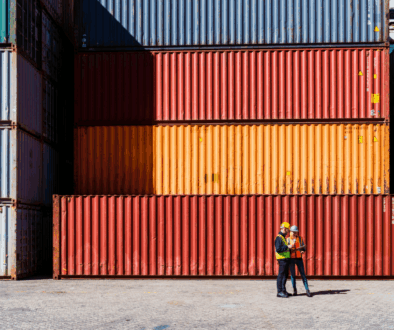EPA acts to phase out “super pollutants” used in refrigerators
US regulators issued a final rule on Tuesday aimed at slashing the use of a highly potent greenhouse gas found in refrigerators and air conditioners.
The move by the US Environmental Protection Agency (EPA), which will take effect next year, marks the agency’s latest move towards phasing down production and consumption of hydrofluorocarbons (HFCs) by 2028.
“This rulemaking is a critical next step in the Biden-Harris Administration’s ambitious plans to phase down climate super-pollutants and ensure the United States leads the way as countries around the world implement the Kigali Amendment,” Joe Goffman, Principal Deputy Assistant Administrator of EPA’s Office of Air and Radiation, said in a press release.
Research suggests rapidly transitioning away from HFCs could help prevent up to 0.5°C of warming by 2100.
The EPA action marks a step towards cutting HFC use to 15% of baseline levels by 2036, as directed under the 2020 American Innovation and Manufacturing Act. The agency’s baseline levels for production and consumption are mostly based on average values from 2011 to 2013. The US goals mirror international ambitions to reduce HFCs laid out by the Kigali Amendment to the Montreal Protocol.
The US began curtailing its reliance on HFCs in 2022, when it reduced production and imports to 10% below baseline levels. The EPA plans to announce two additional regulatory actions later this year.
Avoiding a mistake
Commercial use of HFCs began in the 1990s as a replacement for chlorofluorocarbons (CFCs) after scientists discovered that popular refrigerants and aerosol sprays were depleting the Earth’s ozone layer, which absorbs harmful ultraviolet radiation from the sun. But while HFCs do not damage the ozone like their notorious predecessor, the chemicals come with a major downside – they have a climate impact hundreds to thousands of times greater than the climate impact of the same amount of carbon dioxide.
HFCs currently only account for about one percent of total greenhouse gases. But as global demand for refrigeration and air conditioning grows, demand for HFCs – especially in developing countries – is on the rise. The refrigerants are currently among the fastest growing greenhouse gases in the world, with emissions rising 10 to 15% per year.
“The amount of usage has been increasing dramatically,” said Susan Solomon, a professor of environmental studies at the Massachusetts Institute of Technology (MIT). “Their future contribution is really what we’re trying to fend off. We’re trying to avoid getting into a mistake.”
Large grocery stores are a major part of the problem, according to the North America Sustainable Refrigeration Council, which states that the average supermarket refrigeration system contains thousands of pounds of refrigerant and leaks 25% of its refrigerant each year, a quantity equivalent to the emission from 12 million homes.
Natural refrigerants, which include carbon dioxide, hydrocarbons, and ammonia, can offer sustainable alternatives to HFCs, according to the Department of Energy (DOE). However, with challenges such as high upfront costs and a shortage of workforce training, it can be difficult for supermarkets to switch to technologies that utilize these greener options.
Chemicals called hydrofluoroolefins (HFOs) “are the alternative that is the most direct substitution” for HFCs, said Solomon. “In many ways, they’re similar to the HFCs that they’re replacing, but they have much shorter atmospheric lifetimes. Their ability to affect global warming is much, much reduced.”




